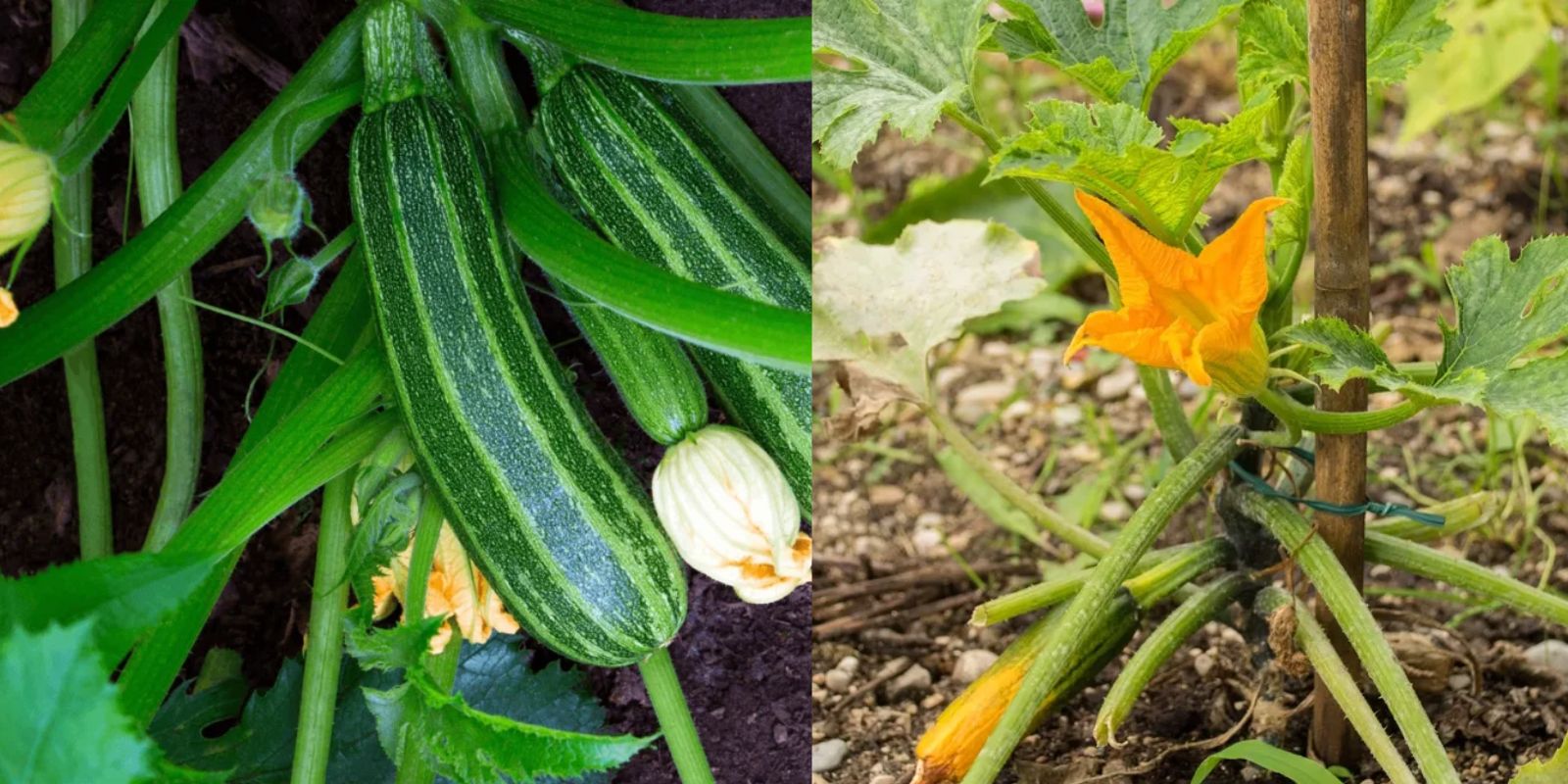Zucchini is a versatile and nutritious vegetable that thrives in a variety of climates, making it a favorite among home gardeners. Even if you don’t have a large garden space, zucchini can flourish in containers, providing a rewarding harvest throughout the growing season. This guide will walk you through everything you need to know to grow zucchini successfully in containers, from choosing the right setup to harvesting your bounty.
Why Grow Zucchini in Containers?
Growing zucchini in containers offers several benefits:
- Space-Saving: Perfect for urban gardening or small patios.
- Control Over Soil and Water: Containers allow you to optimize growing conditions.
- Pest Management: Easier to monitor and protect against common garden pests.
- Portability: Move containers to chase the sun or shield plants from extreme weather.
Step 1: Choose the Right Container
The size and type of container are critical for growing healthy zucchini.
- Size: Use a container that is at least 12-16 inches deep and wide. Zucchini plants have extensive root systems and need ample room to grow.
- Material: Containers made of plastic, ceramic, or fabric are great options. Fabric grow bags are particularly beneficial for drainage and aeration.
- Drainage: Ensure the container has drainage holes to prevent waterlogging, which can lead to root rot.
Step 2: Select the Right Zucchini Variety
Not all zucchini varieties are ideal for container gardening. Choose compact or bush varieties such as:
- Black Beauty
- Gold Rush
- Patio Star
These types are bred for smaller spaces and are more manageable in containers.
Step 3: Prepare Nutrient-Rich Soil
The quality of the soil is key to the success of your zucchini plant.
- Soil Mix: Use a well-draining potting mix enriched with organic matter like compost or aged manure. Avoid garden soil, as it can compact in containers.
- pH Level: Zucchini thrives in slightly acidic to neutral soil (pH 6.0-7.5). You can test the soil pH with a kit and amend it if necessary.
- Add Amendments: Incorporate slow-release fertilizer or organic additives such as bone meal or vermicompost to promote steady growth.
Step 4: Planting the Seeds or Seedlings
Timing and technique matter when planting zucchini.
- When to Plant: Zucchini grows best in warm weather. Plant seeds or seedlings after the last frost, when the soil temperature is consistently above 60°F (15°C).
- How to Plant:
- Sow seeds 1 inch deep directly into the container.
- Space seeds 2-3 inches apart; thin out weaker seedlings after germination, leaving the strongest one.
- If using seedlings, plant them at the same depth as they were in their nursery pots.
Step 5: Watering the Right Way
Zucchini plants love moisture but hate soggy roots.
- Frequency: Water deeply 2-3 times a week, ensuring the soil stays consistently moist but not waterlogged.
- Technique: Water at the base of the plant to avoid wetting the leaves, which can lead to fungal diseases.
- Mulching: Add a layer of mulch, such as straw or wood chips, to retain moisture and regulate soil temperature.
Step 6: Fertilize for Optimal Growth
Regular feeding keeps zucchini plants healthy and productive.
- Initial Fertilizer: Use a balanced fertilizer (10-10-10) at the time of planting.
- Ongoing Feeding: Switch to a phosphorus-rich fertilizer once the plant begins flowering to support fruit production. Feed every 2-3 weeks during the growing season.
- Organic Options: Compost tea or diluted fish emulsion are excellent natural fertilizers.
Step 7: Provide Support and Prune as Needed
Although zucchini plants are bushy, they can benefit from some support and pruning.
- Trellising: If growing a climbing variety, use a sturdy trellis or cage to save space and keep fruits off the ground.
- Pruning: Trim older, yellowing leaves and excess foliage to improve airflow and reduce the risk of disease.
Step 8: Monitor for Pests and Diseases
Container gardening doesn’t eliminate pest risks, but it does make management easier.
- Common Pests:
- Aphids: Spray with a mixture of water and mild soap.
- Squash Bugs: Handpick them off the plant and check undersides of leaves for eggs.
- Cucumber Beetles: Use row covers or yellow sticky traps.
- Diseases: Powdery mildew and blossom end rot are common issues. To prevent them:
- Water consistently.
- Avoid overhead watering.
- Add calcium-rich amendments like crushed eggshells to prevent blossom end rot.
Step 9: Harvesting Your Zucchini
Knowing when and how to harvest is essential for enjoying your crop.
- When to Harvest: Pick zucchinis when they are 6-8 inches long, as smaller zucchinis are more tender and flavorful. Overgrown zucchinis can become tough and seedy.
- How to Harvest: Use a sharp knife or garden shears to cut the stem cleanly, avoiding damage to the plant.
Additional Tips for Success
- Companion Planting: Grow basil, marigolds, or nasturtiums nearby to repel pests naturally.
- Regular Inspections: Check plants daily for signs of pests, disease, or stress.
- Rotate Crops: If growing zucchini in the same container year after year, replace the soil to prevent nutrient depletion and disease build-up.
Benefits of Growing Zucchini in Containers
- Fresh, Healthy Produce: Nothing beats the flavor of homegrown zucchini.
- Cost-Effective: Save money on store-bought zucchinis and enjoy an eco-friendly gardening experience.
- Sustainable Living: Reduce your carbon footprint by growing your own vegetables.
Inspire Others to Start Growing!
There’s no better time to start your container zucchini garden than now. Whether you’re a seasoned gardener or a beginner, growing zucchini at home is a fulfilling way to enjoy fresh produce and connect with nature.
Share Your Journey!
Tag us and show off your zucchini garden! Let’s inspire others to grow their own food. 🌱💚
#HomeGardening #GrowZucchini #ContainerGardening #UrbanGardening #SustainableLiving #GardenGoals #GreenThumb

